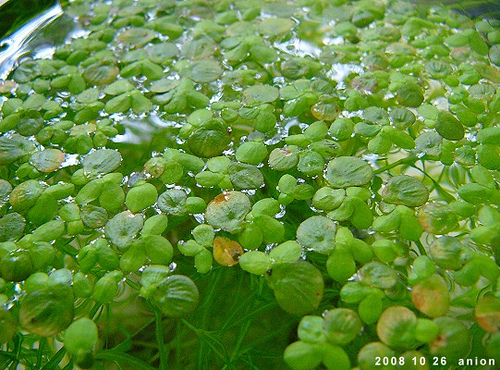Duckweed
Introduction
Aquaculture production of duckweed
The Lemnaceae (duckweed, water lentils) family are the smallest flowering plants. They are free-floating plants with 1 to 3 leaves and a single root (or root-hair) from each frond. Because of their extremely rapid growth, duckweeds can be aggressive invaders of ponds and are often considered a nuisance. They grow in dense colonies in quiet water, best if undisturbed by wave action. They require nutrient-rich water, high in phosphorus and nitrogen, and are therefore often found in areas of agricultural run-off. Various species are known and grow in different climates throughout the world. Because of the very high productivity per surface area, duckweed holds great potential for future global villages. This tiny aquatic plant has tremendous potential for cleaning up pollution, combating global warming and feeding the world.
Duckweed as food
Duckweeds have very high protein content of up to 50% of dry mass. High levels of vitamins are also present. The taste is remotely similar to spinach. Duckweeds have historically played a role in some east Asian cuisines (Wolffia genus). Because of rapid growth and ease of cultivation, duckweeds for consumption by animals and humans are now getting more attention. Current uses as animal fodder are mostly as fish food (carp, tilapia) and bird food (chicken, duck). Possible uses as part of a human diet are still vastly under-explored.
Duckweed for bio-energy
Duckweed produces biomass faster than any other flowering plant. It has clear potential as an alternative for biofuel production.
Pictures
Ideas and applications for OSE
Human consumption: duckweed in salad or soup on a sandwich or as a component of vegetable spread
For animals: fish food, chicken food,
Links
July 2008 article on Treehugger
Most comprehensive manual on duckweed aquaculture
Duckweed as a Primary Feedstock for Aquaculture
Duckweed as a feed supplement for livestock
Older patent with many details on duckweed for human consumption
Cross, J.W. (2006). The Charms of Duckweed. [1]
Etc...
(note: OSA stands for Open Source Agroecology - or those techniques sufficient for producing local food systems.)
